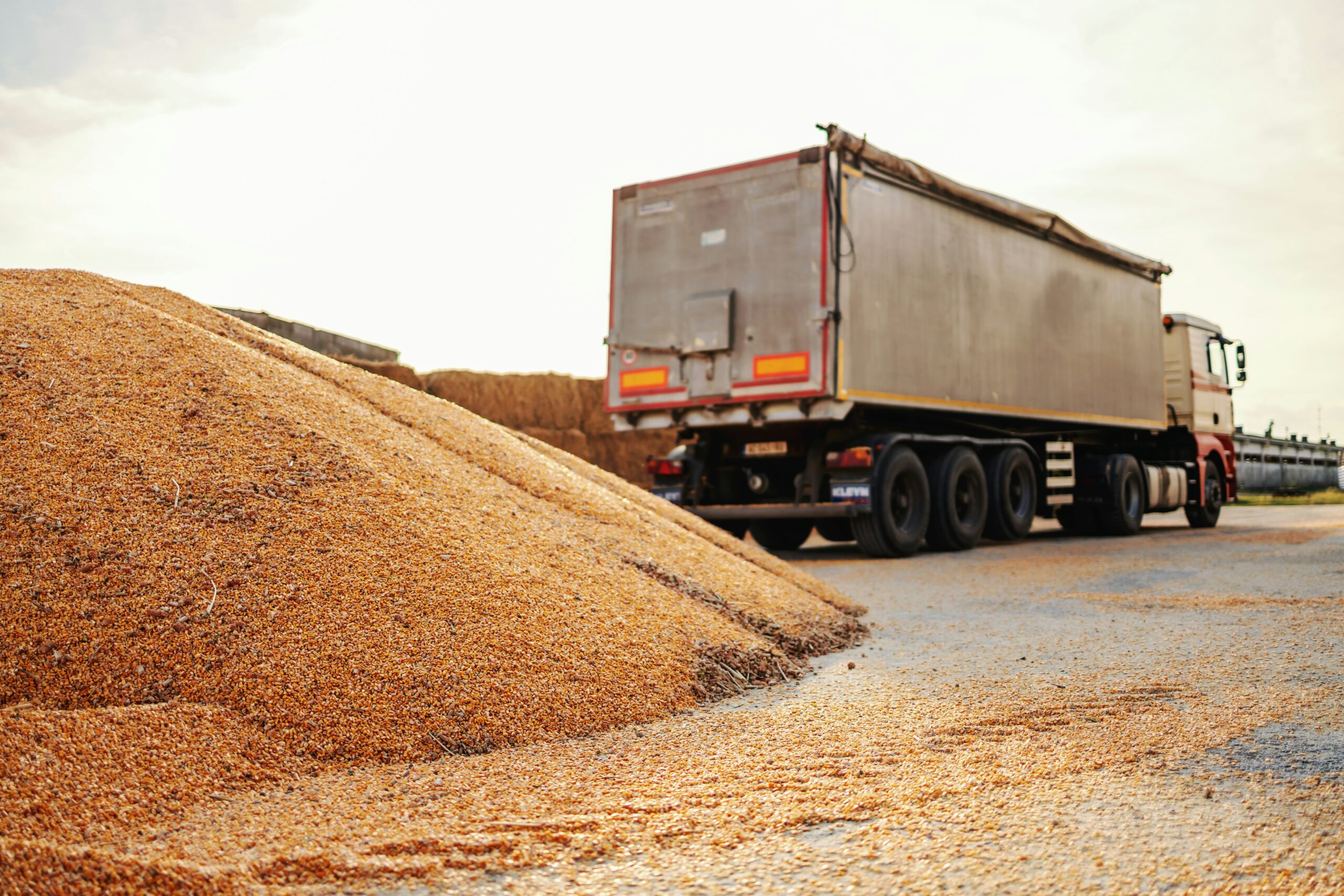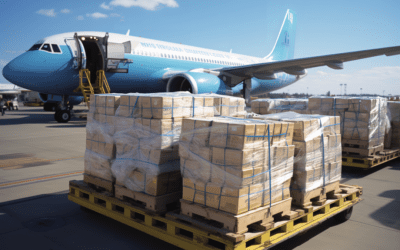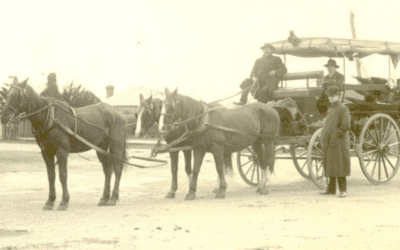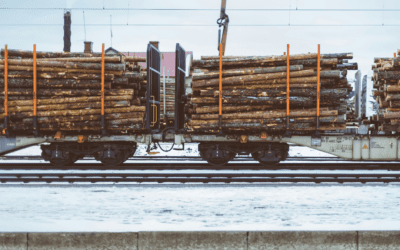What is bulk shipping?
Bulk transportation plays a crucial role in moving larger quantities of goods efficiently. Whether it’s dry commodities or liquid products such as fuel, the logistics behind bulk shipping can be a complicated process.
Ports, Rails, and Commodities
Ports serve as a vital gateway for bulk goods, 25 United States ports alone handle a staggering 657 million tons of cargo, accounting for 65.1% of all dry bulk tonnage nationwide. Notably, the Port of South Louisiana handles nearly three times as much dry bulk tonnage as the second-most-ranked port, which would be the Port of New Orleans. Moreover, along the Gulf Coast, a substantial $8.9 billion worth of bulk agricultural products were exported from the Ports of New Orleans and Baton Rouge in 2023.
For rail terminals, shippers mainly depend on the North American bulk terminal infrastructure to distribute their bulk goods, while some use terminals on a case-by-case basis. This is often the case when the volume of goods is better suited for rail transportation or when the distance between the origin and destination exceeds 800 miles on highways.
Bulk terminals handle a diverse range of dry and liquid commodities, including plastics, chemicals, fuels, and food-grade products. When choosing a terminal location, shippers must consider the proximity to final destinations, as rail rates are less than truck transportation. An alternative for shippers can be short-line railroads, which can interchange carloads and offer more competitive pricing.
What is dry bulk shipping?
Dry bulk transports large commodities such as coal, grains, and ore. The dry bulk sector plays a crucial role in the global economy, accounting for approximately 50% of the world’s trade volume.
A dry bulk trailer is a type of pneumatic trailer equipped with multiple cone-shaped hoppers at the bottom. The process of loading and unloading a shipment looks different than other commodities because it doesn’t involve packaged boxes, barrels, or other small containers. Each hopper has a valve that can open to a pipe running beneath the trailer. Dry bulk trailers come in various sizes, with capacities ranging from 550 cubic feet for a single hopper trailer to 2,800 cubic feet for a trailer with six hoppers.
When it comes to shipping dry bulk goods, certain equipment such as hoses, vacuums, and blowers are necessary. Dry bulk carriers typically use four-inch diameter hoses to transfer material in and out of a trailer.
If the product is being loaded from a rail car or offloaded to a silo, these hoses may require adapters to connect them to other equipment. Trailers equipped with blowers typically transport other types of commodities, such as sand or clay. These blowers are about half the size of vacuum units and have less power.
Liquid bulk tankers and container types
Liquid bulk trailers are specialized vessels designed exclusively for transporting liquids. They ensure safe and efficient bulk liquid transport, whether they are hazardous, viscous, or sensitive.
Chemical trailers, also known as tankers, transport chemicals, corrosive materials, and flammable products. Other types of trailers are food-grade tanks, petrochemical tanks, and petroleum tanks.
Some liquid container types include intermediate bulk containers, flexible IBCs, tank containers, and flexitanks. Tankers are the leading vessel type calling at the Nation’s top tonnage ports, carrying liquid bulk commodities such as fuels, accounting for nearly 40% of U.S. vessel imports by tonnage in 2022.

Hazmat packaging requirements
Bulk packaging prevents the release of hazardous materials into the environment. To ensure safe transportation, hazmat packages must adhere to specific guidelines.
- Packaging design: Bulk packaging must be designed and maintained to prevent the release of hazardous materials into the environment.
- Which of the following hazmat packages requires labels? If the material is hazardous, it must be packaged and follow specific requirements. Hazmat packages must have labeling that includes orientation arrows, an identification number, shipper’s information, proper shipping name markings, and hazard class labels.
What is hazard communication?
Once the material is properly packaged, it communicates its hazards through the following:
- Packaging group and labels: the packaging indicates the material’s group, based on the commodity level of danger, and displays the required labels which communicates information to handlers.
- Emergency response information: In case of an incident during transportation, such as a spill or leak, the package provides information to emergency responders for them to take appropriate action.
Responsibilities of hazardous materials for shippers
49 CFR Part 173 outlines the responsibilities of hazardous material for shippers. The first and often the most challenging step is the identification of hazardous materials. Classification of hazardous materials is a critical responsibility of the shipper, basing other requirements on this identification.
Either the class or division number indicates the hazardous material class. Here’s a summary of nine classes of hazardous materials:
- Class 1: Explosives
- Class 2: Gases
- Class 3: Flammable Liquids
- Class 4: Flammable Solids
- Class 5: Oxidizers and Organic Peroxides
- Poisonous Materials
- Radioactive Materials
- Corrosive Materials
- Miscellaneous Hazardous Materials
Shipping papers are documents used for transporting hazardous materials, providing descriptions such as proper shipping names, identification numbers, and packaging groups. The shipping paper can be a bill of lading, waybill, or a manifest document.
These documents must be in accordance with Hazardous Materials Regulations (HMR) and include an emergency response telephone number. Depending on whether the material poses a hazard zone for poison-inhalation hazards, additional information may be necessary.
Importance of regular cleaning and safety procedures
The importance of regularly cleaning the inside and outside of a tank is crucial. Washouts help prevent corrosion. When the tank is not in dedicated service, thorough cleaning between loads is essential. Neglecting this step could lead to the accidental mixing of different cargoes, potentially resulting in harmful chemical reactions that corrode the tank material.
Following specific cleaning procedures and adhering to safety regulations outlined by the Occupational Safety and Health Administration (OSHA), to safeguard employees during tank cleaning processes is crucial.
Navigating the challenges of bulk transportation
Trusting in a reliable trucking company experienced in handling bulk commodities can be a strategic and efficient decision for your business. Prioritizing your business’s safety and compliance can ensure smooth and secure transportation while minimizing risks.
At KCH Transportation, our experienced team understands the distinct requirements of bulk shipping. Effortlessly transport your bulk goods through our network of certified carriers. KCH Transportation ensures a seamless shipping process by coordinating all aspects, from hazmat certifications to wash-outs.






